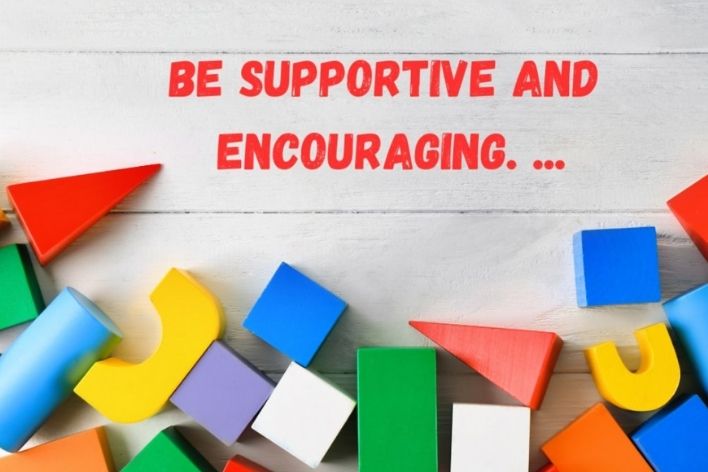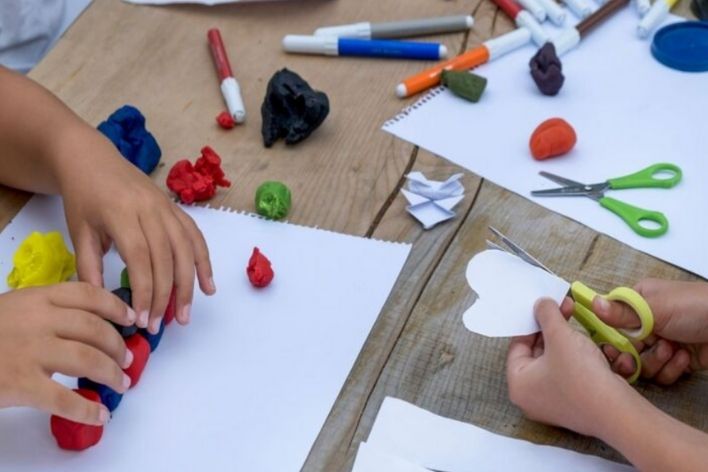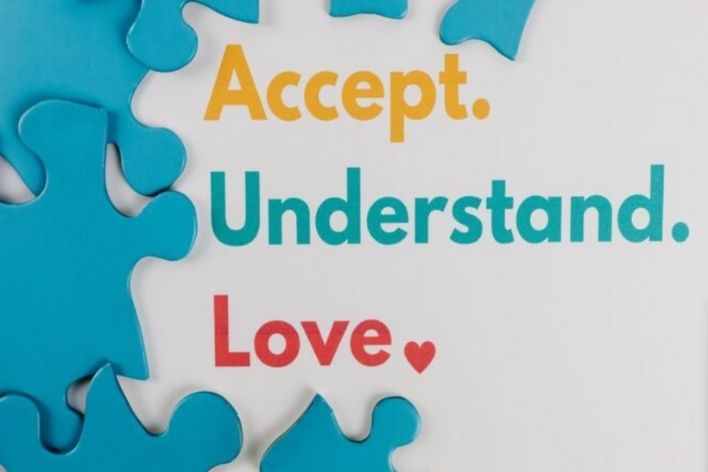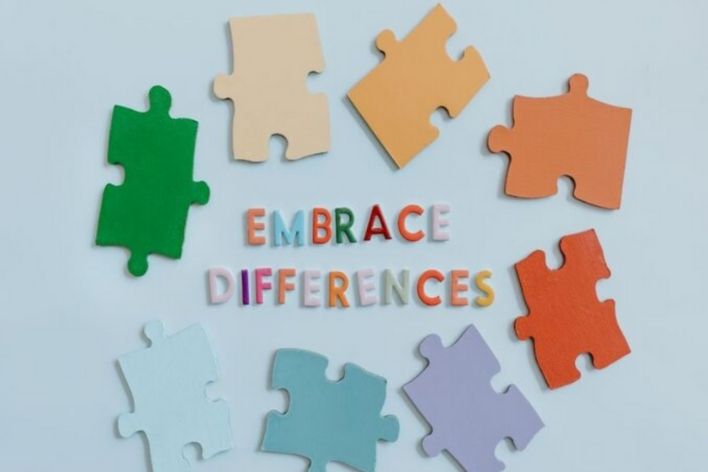5 Ways of Innovation to Support Students with Learning Differences

Every person today is unique in many ways, but more than anything, this diversity is witnessed in today's schools. In such a diverse educational environment, a greater understanding of the needs of students with learning differences is more crucial than ever. Innovation is what primarily helps these students to be academically and socially sound. This blog will briefly discuss learning disabilities, what they are, their different forms, and innovative approaches that allow more inclusion in schools.
What Are Learning Differences?
Learning differences can be defined as the different ways people think and learn. This essentially encompasses a broad field of conditions that include learning disabilities, which impact a student's ability to learn in a typical way to acquire knowledge and skills. Understanding learning differences is important for creating effective teaching strategies that can work with a variety of learning needs.
Meaning of Individual Differences
The idea of individual differences relates to the fact that all students are different. Every learner has differences in strengths, weaknesses, preferences, and learning styles. With an understanding of those individual differences, instructors can modify their approaches to enable all students to learn effectively.
There are many varied forms of learning disabilities
Learning disabilities can range from reading and writing to mathematics and many other disciplines. Some of the more common learning disabilities include:
1. Dyslexia: This is a reading and language processing disability, causing learners difficulties in reading and decoding words and attempting to understand the message of text.
2. Dysgraphia: This affects students' ability to write. They will have difficulty in handwriting, spelling, and organizing ideas on paper.
3. Dyscalculia: This is a problem with numbers and related mathematical ideas. Calculations and problem-solving become challenging.
4. Auditory Processing Disorder: The deficit in the ability to process auditory information means the inability to understand spoken language.
5. Visual Processing Disorder: Failed to process visual information in a manner that would produce errors in reading and any other visual tasks.

5 innovative Ways to Support Students with Learning Differences
-
Innovative Teaching Methodologies
-
Personalized Learning
-
Collaboration and Communication
-
Real-Life Examples of Innovation at Work
-
Teacher Education
1. Innovative Teaching Methodologies

The innovative role in teaching is often thought of as one associated with the innovative teaching methodology.
Innovation in education includes several ways of teaching and tools aimed at involving all learners. For students with a learning disability, innovation in teaching may mean new means of finding information or a way of delivering their knowledge.
Assistive Technology
Of course, one of the biggest innovations in learning differences probably lies in assistive technology. Technology to assist students with technology like text-to-speech, speech recognition, and organizing digital graphics will revolutionize the nature of the learning experience. Consider the case of a child with dyslexia: although the student may not be able to decode print easily, maybe he can understand audio. Audio versions of texts can help him comprehend the material.
Multisensory Learning
Another creative approach to learning is multisensory learning, which is the use of a variety of senses to learn. Some of these methods include the use of visual materials, doing practical activities, and hearing of auditory material. For example, presenting writing skills to those students with dysgraphia will, perhaps, be done much more effectively by moving and molding clay to write letters.
Gamification
Gamification can be offered within the classroom to help motivate, as well as increase enjoyment in learning. Games supporting key concepts that have to be learned best suit those who have a learning disability since they provide immediate feedback and give challenges to persist.
2. Personalized Learning

Personalized learning is this new approach that tailors education to the needs of the individual students, and these students who have some kind of learning disability can greatly benefit from it because the educators can design specific learning plans that fit with the individual's weaknesses.
Flexible Curriculum
It is a flexible curriculum where the lesson plans might change according to the needs of different learning styles. For instance, the one suffering from dyscalculia might not do too well with the traditional instruction of mathematics but might excel with visual aids and real-life application of the same concepts.
Data-Driven Decision Making
Another way of building on the students' skills through assessing their data in instructional decisions can make a world of difference to those kids with special needs. Students receiving some form of disability can adjust their strategies by looking at individual and class progress monitoring and can intervene timely in the respective needs of the students.
3. Collaboration and Communication

Good communication and collaboration among educators, parents, and specialists work to the advantage of students. New approaches can facilitate teamwork, ensuring that everybody is on the same page about the progress and needs of a student.
Integrated Support Teams
Effective integrated support teams consisting of teachers, special education staff, and counselors can help foster a holistic learning system. These teams can collaborate to integrate comprehensive support plans that specifically cater to the challenges of students with learning disabilities.
Parent Engagement Platforms
Innovative technology can also facilitate communication between schools and families. Systems that provide frequent, detailed updates on a student's progress along with strategies for support within the home enable parents to be more hands-on in their child's education.
4. Real-Life Examples of Innovation at Work

Schools Engaging With Virtual Reality
Some of these schools now integrate virtual reality as part of the collection of tools used in carrying out the immersion process of learning for the students. To a child who has learning disabilities, virtual reality can even make concrete what would otherwise be a rather abstract concept. For example, kids suffering from dyscalculia would learn better about mathematical concepts if ideas involving relationships and numbers were made visible through interactive environments provided by VR.
Adaptive Learning Software
Many educational institutions have installed adaptive learning software, which adjusts content based on a student's performance. This kind of software calculates the strengths and weaknesses of a student and alters the curriculum in a way that a student is not either too challenged or too supported.
Mindfulness and Emotional Support Programs
Knowing that children with LD face emotional impairment, schools are starting to offer mindfulness programs to be implemented in schools. These children learn how to handle stress and anxiety levels, ensuring this more receptive learning environment.
5. Teacher Education

A supportive learning environment calls for teacher education. Professional development opportunities in special education and inclusive practice are positively rewarding.
Understanding Learning Disabilities
Trainers should learn through in-depth knowledge of various learning disabilities and how they affect learning.
This enables the trainers to apply practical strategies and tools for differentiated needs.
Trends in Technology
Technology advancement requires teachers to update themselves with available tools and resources. Professional growth is continuous, and educators are at par where one should be ready to ensure effective applications of new solutions.
Conclusion
Innovation is the most vital role in supporting learners with any form of learning difference. Accepting new ways of teaching, technology use, and collaboration has empowered all learners through an inclusive environment. Acquiring knowledge on how to find ways around learning disabilities and devising innovative strategies can ensure that all learners benefit from the differences.
As we continue exploring, experimenting, and looking for new ways of engaging learners, it is incredibly important to keep our emphasis on individual needs and strengths. With that approach, we will surely build a brighter future for students with learning disabilities, making them reach their full potential. The fast-changing world encourages innovating, which no longer is an option but a necessity to create equity and effectiveness in education for all.
MCQs
1. Which of the following can be used to support students with learning differences?
A) Traditional textbooks
B) Voice-to-text software
C) Standardized testing
D) Written assignments only
Correct Answer: B) Voice-to-text software
2. What is the main benefit of personalized learning plans for children with learning differences?
A) All students follow the same curriculum regardless of needs
B) Allows students to choose only the easiest subjects
C) Tailors the learning approach to each child's unique strengths and challenges
D) Focuses solely on standardized test scores for progress
Correct Answer: C) Tailors the learning approach to each child's unique strengths and challenges
3. Which innovation helps students with learning differences by offering alternative ways to demonstrate knowledge?
A) Interactive whiteboards
B) Flexible assessments
C) Classroom seating arrangements
D) Standardized grading
Correct Answer: B) Flexible assessments
4. What role does Universal Design for Learning (UDL) play in supporting children with learning differences?
A) It removes specialized support for students with disabilities
B) It provides a rigid curriculum that all students must follow
C) It promotes multiple means of engagement, representation, and expression to support diverse learners
D) It focuses exclusively on digital tools
Answer: C) It promotes multiple means of engagement, representation, and expression to support diverse learners
Discover more exciting ways to make learning fun—explore our site for engaging resources and activities today!
Related Blogs
Technological Advancements Supporting Student Achievement
Classroom innovation and projects led
Achievements in innovation and technology
Other Related section
NCERT Solutions | Sample Papers | CBSE SYLLABUS| Calculators | Converters | Stories For Kids | Poems for kids | Practice Worksheets | Formulas I Blogs
Admissions Open for
CBSE Schools In Popular Cities
- CBSE Schools in Bangalore
- CBSE Schools in Mumbai
- CBSE Schools in Pune
- CBSE Schools in Hyderabad
- CBSE Schools in Chennai
- CBSE Schools in Gurgaon
- CBSE Schools in Kolkata
- CBSE Schools in Indore
- CBSE Schools in Sonipat
- CBSE Schools in Delhi
- CBSE Schools in Rohtak
- CBSE Schools in Bhopal
- CBSE Schools in Aurangabad
- CBSE Schools in Jabalpur
- CBSE Schools in Jaipur
- CBSE Schools in Jodhpur
- CBSE Schools in Nagpur
- CBSE Schools in Ahmednagar
- CBSE School In Tumkur











